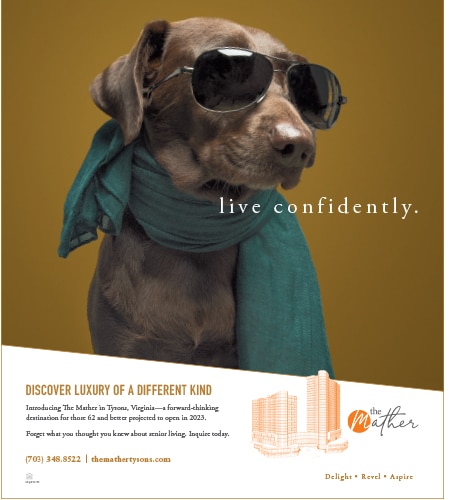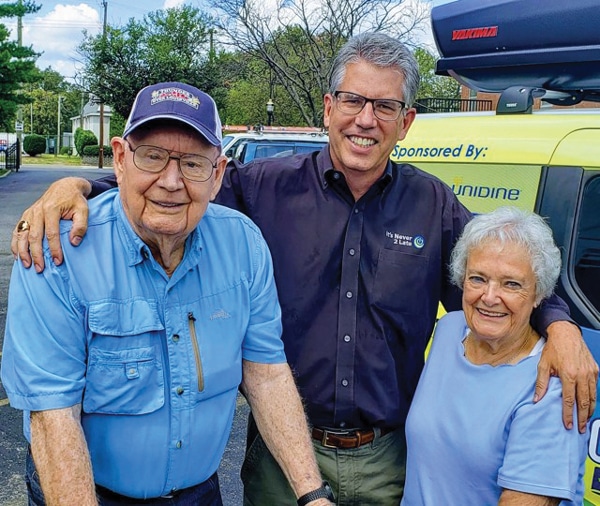What’s the top social media platform for people 65 and older?
If you said Facebook, you’re correct, according to the Pew Research Center’s latest fact sheet. But the second most popular is YouTube. Surprised?
And the adult daughter of the prospective resident you’ve been talking to is very likely to be on Facebook every day, and the adult niece who has been living with and helping that same prospective resident is likely on Instagram never reads emails, never talks on the phone, and communicates through text and WhatsApp.
To introduce people to your community, you have to somehow reach them all.
Finding individual ways to reach and serve individuals is at the heart of senior living. The extensive research and relationship-building processes around choosing senior living requires more touchpoints, more educational content, and more long-term management of online reputation. But trends and technology in sales and marketing are making these challenges easier.
Omnichannel smooths the path
“With technology today, we can do effective omnichannel marketing,” says Jamison Gosselin, vice president of senior living strategy at G5, who has also held senior positions at Sunrise, Holiday, and Argentum. “Other industries have been doing it, and now it’s coming into senior living.”
G5’s recent “State of Digital Marketing” report outlines trends in senior living and matches these to specifically to how digital marketing can help.
“Omnichannel marketing” means offering seamless experiences. It differs from multi-channel marketing in that you’re getting the same impressions, experience, and services whatever device or channel you use.
“Think about how personalization enhances your daily life today,” says Janel Wait, chief strategy officer at GlynnDevins, a tech-enabled marketing firm serving senior living. “Before you get in your car to drive to work, your phone proactively calculates your drive time down to the minute. If you watch Netflix, it will customize suggestions based on your personal viewing preferences.”
“We expect personalization in our daily lives, and senior living customers have the same expectations,” she says.
A complex buyer’s journey
“We like to draw nice clean lines of how the buyer’s journey works,” says Gosselin. But in senior living, emotional factors, issues with time and health, or the amount of research and conversation needed to make it more of a dance than a direct route. The discovery stage alone can last months. G5 puts the average number of touchpoints before a decision is made at 10.7.
“Mapping each unique customer journey allows us to understand what is and isn’t working well when executing omnichannel campaigns,” says Carrie Mandelbaum, senior vice president, digital communications, at GlynnDevins. With the map, “we can create, adjust and enhance touchpoints to ensure the most effective buying and service process.”
“Data has the power to tell us where we are, and where we need to go,” Gosselin says. “It is going to accelerate how we understand our customer, and how they can benefit from that understanding.”
Those who aren’t jumping in can still apply one of omnichannel’s major insights: Be aware of how different the journey to a decision can be for each prospective resident and each of their friends and family members.
The nano-influencers
When many of us hear “social media influencer,” we think of a celebrity showing off her handbag on Instagram. But digital marketing and reputation management experts alike tout a different kind of influencer—unpaid and authentic—as ideal for senior living. An influencer is simply someone who posts a lot on social media, and who a lot of people pay attention to—word-of-mouth made much larger.
A nano-influencer is someone who typically has fewer than 1,000 followers—but they’re the right followers. A nano-influencer can deliver qualified leads because their followers share or enjoy the nano-influencer’s personality, tastes, and way of life—and maybe neighborhood. Another advantage is that they often take their influence offline, sharing opinions face-to-face with friends, says the Association of National Advertisers’ Anne Field, in ANA Magazine: “They’re influencers at the grassroots level.”
To find them, start with your community. Who are the social media mavens who post pictures from events, or of the community pets? What family members love posting photos of themselves with Auntie? “The best influencers are those who have already walked the path,” Gosselin says.
Then, recommends Gosselin, look to people related to established local businesses in related fields, such as real estate or health care. You can also find out who’s talking about you with simple and often free tools such as Google Alerts.
Adweek points out that finding and engaging nano-influencers takes some work and should be thought of as a long-term method to elevate a brand. You can’t control the message unless you pay them, but paid influencers destroy trust—one reason that trend is tapering. To prevent this, says Julian Baladurage in Forbes, don’t rush in to engage—watch the kinds of posts and comments to see if they’re the right one. Don’t expect a nano to post about you daily or even weekly—this annoys people and affects trust, says ANA. Let it happen naturally and authentically.
Follow-up via remarketing
You know those “stalker ads”—the ad that follows you from website to social media to blog, trying to sell you something you just bought? That’s remarketing at its most basic.
But with more personalized remarketing, you can reach prospects with more specific messages—bits of information about amenities, a short testimonial, a call to action saying you’re ready to help.
5G points out that with the long online research times associated with senior living searches, remarketing can be highly effective to keep a community top-of-mind. It’s also cost-efficient and can be easily scaled.
Freedom in the future
Automation, AI, and machine learning, working together, are seen by 5G and many others in digital marketing as the norm of the future. The goal is that your digital marketing essentially will run itself, adjusting to changes in prospect behavior, seasons, and other factors. This will save money—essential with the coming challenges in middle market and affordability.
But it will also free people to do what really matters in senior living sales counseling: Listen, connect, laugh, understand, and find the right solution—for each individual, inimitable human.
Getting Creative: Three Case Studies
Personalizing for the market

The area, just outside of Washington, D.C., has long been home to Gucci, Prada, and Mercedes, but more recently the skyline has been dotted with construction cranes and tall, gleaming new buildings. The sophisticated new Life Plan Community, The Mather, would need to both fit in and stand out.
The solution is the eye-catching “Defy Expectations” campaign, in which impeccably groomed and accessorized pets strike Vogue-quality poses, with taglines like “Reimagine possible” and “Live confidently.” The visuals dodge senior living clichés; they meet Mather’s goal of redefining senior living, and they make people smile.
Mather often has award-winning creative, and this was no exception, earning Gold and Silver in the League of American Communications Professionals global competition. Phase 1 of the Tysons community was at 50 percent presold in November.
Standing in a resident’s shoes

The four-part illustrated web series, featuring short takes on lifestyle and relationships from a sophisticated but good-humored character, is structured based on the steps residents usually take, from decision to settling in. They made the character male because they knew men often perceive community living as relinquishing independence.
Producing creative marketing takes strong focus and dedication, says Andy Parker, creative director and writer for the series. Social media director Lorraine Aiken also helped out and was a proofreader. “Something would pop up every day to prevent it from being written,” Parker says.
It would have been impossible without the artistry and skills of Maxwell graphic designer Elizabeth Mathis. She experimented with illustrating about eight different characters before they settled on Mr. Rose.
But the result is uniquely relatable—more like a frank resident-to-resident conversation than a pitch or a brochure. “We wanted to change how people thought about senior living. We were really intent on trying to remove that stigma,” Parker says.
As the Steve Rose character puts it: “These are the good years and I’m going to do the things I love. Swinging through a jungle in a loincloth with the missus on my arm is not likely, but living my life to the fullest is. As for cracking a 300-yard drive…I can dream. I now know that it takes determination and grit to make this life transition. But before I boxed up a lifetime of mementos and personal treasures, I wanted to know what in the world ‘Assisted Living Community’ meant.”
Meeting people—literally

On the “60/20, Cruisin’ and Croonin’ Tour,” residents, often accompanied by community caregivers, sang, laughed, and revealed their life stories from the passenger seat. The videos that resulted are addictive; visit in2l.com/6020tour, to take a look. They’re also posted on YouTube.
“People are just thirsty for something creative to do,” York says.
The bright-colored van is plastered like a NASCAR vehicle with sponsor logos, but the tour’s focus was fun, not sales. The idea was simply meant to be “a sincere thank-you,” but it ended up becoming “probably the most profound thing I’ve done in 20 years,” York says.
“I’ve always done my best not to have a sales pitch,” York says, but the intentionally fun and creative nature of the tour opened up new conversations and solidified relationships, as well as reaffirming his commitment to his vocation of improving engagement and quality of life for older adults. That’s about all one could ask for in a 60th year.
But it was important for the business as well. With a subscription business model, retention is critical—and over 20 years of business, some of these relationships can drift as new people come in, so the tour was a fun way to get reacquainted.
The open-ended questions York asks of residents are textbook examples of how to evoke stories and establish rapport, but he was also happy to just be in the moment.
“People want a reason to celebrate, to have some fun,” he says. “I was surprised at how many people took the birthday part of it seriously.” He was welcomed with cakes, for instance, and at one community, in Mississippi, staff and residents rolled out a red carpet and donned evening wear (at 9 a.m.) to greet him.
The lesson: If you get creative, people will meet you more than halfway.

